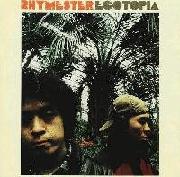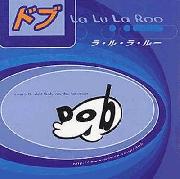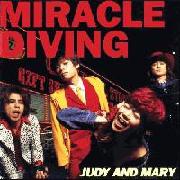|
User
Reviews 85
Approval 97%
Soundoffs 189
News Articles 14
Band Edits + Tags 6,701
Album Edits 12,157
Album Ratings 15849
Objectivity 73%
Last Active 07-27-22 7:57 am
Joined 12-20-10
Review Comments 855
| Discovolante's Best of: 1995 (Japan Edition)
From the beginning of the year to the end, via the Sputnik release calendar. | | 1 |  | The Piass
Ryouki Kousatsu Chissoku-Shi
Perhaps the biggest "who?" on the list... or at least one of the biggest... The Piass are a long-running underground visual kei band who have been making blistering punk-metal tracks for over 3 decades now. Their most punk moment came in 1995 with the release of their first full length, the mouthful title "Ryouki Kousatsu Chissoku-Shi", which roughly translates to 'bizarre strangulation suffocation'. Punk as hell. Anywho, the tracks are raw with a no holds barred approach that made them instant underground superstars upon the album's release. One of the most highly revered albums in early underground visual kei. | | 2 |  | Modern Grey
Jinkou Rakuen
The companion to The Piass in terms of bands who will make you go "who?", Modern Grey was a band that bled atmosphere in everything they did. Their best moment came in 1995 with the unparalleled "Jinkou Rakuen", an album that is drenched in the highest level of emotion capable. Whether it's making you quite literally punch your fist in the air to its feelgood power pop melodies or hitting you right in the heart with ballads like "Saigo no Kotoba", "Jinkou Rakuen" is an album that is euphoric to the nth degree and will certainly get a reaction out of you with its whimsical sound. | | 3 |  | Fanatic Crisis
Taiyou no Toriko
Fanatic Crisis is another visual band that, like The Piass, certainly had no trouble attracting an audience from its beginnings. Although they would achieve nationwide popularity with a bubbly, power pop sound several years later, they originally were more-or-less a goth metal band, believe it or not. And that original sound is encapsulated on their very first EP "Taiyou no Toriko". Overpowering in its bleakness at points (most notably on the killer opening "Kuroi Taiyou") and yet maintaining a sort of sadistic sense of humor, "Taiyou no Toriko" is without a doubt Fanatic Crisis's best moment, and it would sadly be the only time their original goth metal sound would be the dominant genre on a release, as it would linger on their next EP, "Marble", in a much more toned down way, before completely disappearing afterwards. | | 4 |  | Cornelius
69/96
"69/96" is sort of in a bizarre placement in Cornelius's history. While his debut "The First Question Award" sounded like extras from the catalog of his previous band Flipper's Guitar and certainly everyone knows his third album "Fantasma", "69/96" is an album that doesn't work as a transitional piece between the two albums, and instead is just a surprisingly dark and mysterious album that chooses to experiment with louder, colder elements that makes the album pretty divisive. A detractor may say it's just too... much of an oddball album for an artist like Cornelius, whereas on the other hand, "69/96" is probably his most unique album in his vast catalog just for how against the grain it is. Needless to say, I'm absolutely pro-"69/96" lol. | | 5 |  | Rhymester
Egotopia
A vast departure from the fun nature of "Ore ni Iwaserya", Rhymester's second album, "Egotopia", was widely acclaimed and hailed as an utter masterpiece upon its release, unlike the more polarizing reaction of their previous album. Today, "Egotopia" is considered not just to be Rhymester's magnum opus, but also one of the finest rap albums in Japanese music history, boasting a cool and collected jazz-centered sound. | | 6 |  | Maki Ohguro
La.La.La.
In 1995, pop icon Maki Ohguro reached her all time commercial and critical peak with the release of her third full length album "La.La.La.". Featuring a much more varied sound than on her previous two, it also is home to the anthemic single "La-La-La", which is considered to be her signature track. | | 7 |  | Confusion
Diffusion
Confusion were an extremely underrated electronica duo that made some sweet, sweet earworms, with perhaps their best moment coming with the release of their first full length "Diffusion". It has a sort of keenness on inducing bits of mid 90s nostalgia with its glistening electropop tendencies. A painfully underrated album from a painfully underrated electronica act. | | 8 |  | Feel So Bad
Endorphine
Although "Funky Side Business" was Feel So Bad's first album released as a band, it was "Endorphine" that would be their first real album that you could hear and feel all of the instruments in a non-synthesized way. "Endorphine" thrives in bleakness and hard jams, and seemingly highly influenced by grunge, is undoubtedly one of their darkest albums to date, which is precisely why it's so gripping. The alt metal rhythms are even more urgent, with one of the standout tracks on the album, "Kanashimi ni Aitakute", sounding very similar in nature to the work of "Angel Dust" era Faith No More. One of the brightest examples as to why Feel So Bad are one of Japan's premiere metal acts. | | 9 |  | Bonnie Pink
Blue Jam
Making a very small splash (if that) in the Japanese mainstream with the release of her first EP "Blue Jam", it would go on to attract a cult following and wide appraisal upon Bonnie Pink's slow venture into stardom beginning two years later. Soulful and with its heart-on-its-sleeve, "Blue Jam" is a brilliant introduction to an artist who did things her way and waited for the mainstream universe to come to her. | | 10 |  | hitomi
Go to the Top
It took hitomi a few singles to catch on, but by the time she released her first album, the appropriately titled "Go to the Top", hitomi was poised to catapult on top of the Japanese mainstream and become one of the country's biggest stars for the next few years. Called one of the most revolutionary female pop artists of the decade for her more sexual and tongue-in-cheek topic matter, "Go to the Top" basically crawled so that artists like Speed, Ayumi Hamasaki and Namie Amuro (who at this point was still making basic teeny bopper pop) could run. | | 11 |  | Date of Birth
La Lu La Roo
In 1995, Date of Birth did one of the biggest 180's in 90s Japanese music with the release of their electronic-tinged masterpiece "La Lu La Roo". Gone was their more mature, arthouse sound and in its place was a fuzzy, highly atmospheric sound that wowed audiences in Europe upon its release, as it was released in Germany, and with an EP released solely for the European market in 1996. Albeit short lived due to their disappearance by the new millennium, "La Lu La Roo" is a very entertaining switch-up for a band that had no shyness at all when it came to re-innovation. | | 12 |  | Sharan Q
Gambler
With their album "Gambler", Sharan Q shot to the top of the Japanese masses and charmed the entire country with their seemingly simple yet ultimately very filling sound that takes elements of classic 70s glam (and probably 60s/70s rock in general) and combines it with a more modern (by 1995 standards) synthesized sound. "Gambler" is essentially the sound of a hard working band finally making it in a huge way. | | 13 |  | Switch
Furuten
Yet another "who?" entry in the vein of The Piass and Modern Grey, Switch were a band that had many members in their lineup that seemed to borrow a bit from the playbook of Kome Kome Club in not just their large lineup, but also their flamboyant image and sound which was rooted in dance pop. With their 1995 debut "Furuten", Switch made a release that is surprisingly diverse with practically something for just about everyone. Strong grooves, stellar vocal performances from all four(!) vocalists and a willingness to explore make "Furuten" one of the most underrated albums of the decade. | | 14 |  | Judy and Mary
Miracle Diving
With "Miracle Diving", Judy and Mary further expand on the pure pop nature of their predecessor album "Orange Sunshine", and instead adds more layers to their new direction. What you get is an album that fantastically sets up a bit of the foundation that Judy and Mary would build upon and rapidly expand upon when further experimenting with their constantly evolving sound. With its more fleshed out idas, "Miracle Diving" wonderfully secures Judy and Mary's path to critical dominance following the critical blunder of "Orange Sunshine". | | 15 |  | King Giddra
Sora Kara no Chikara
Closing off perhaps what is the most significant year in Japanese hip hop, King Giddra kicked down many doors in the genre with its daringness to tackle political issues in the same aggressive vein as Public Enemy. With the group coming to prominence the same year hip hop was making serious waves in the Japanese mainstream for the first time, King Giddra was the perfect antithesis to the heavily pop influenced watered down subvariant, with their 1995 debut "Sora Kara no Chikara" being regarded as one of the most radical and finest Japanese hip hop albums of all time. | |
|
